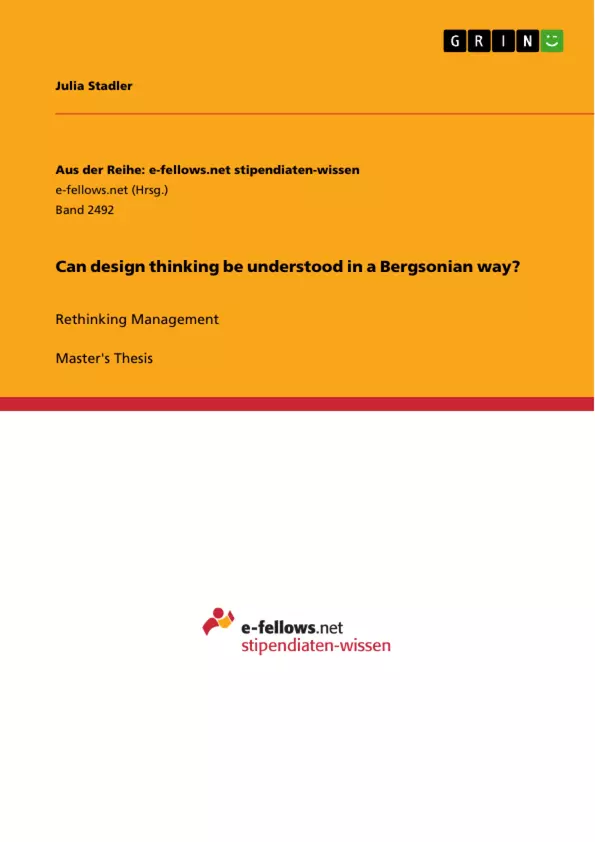The processual approach of design thinking is supposed to lead to a profound understanding of complex problems as well as to creative solutions. The philosopher Henri Bergson understands life as a creative evolution and defines process and change as the foundations of reality. The goal of this thesis is to find out if design thinking can be understood from a Bergsonian perspective. To date, research has merely elaborated on the link of management and innovation with Bergson’s philosophy, however, the link to the quite new approach of design thinking has never been addressed. Therefore, the author conducted an empirical study with design thinking practitioners and systematically related its findings to Bergson’s philosophy. The consolidation of both perspectives allows for an alternative understanding of intuition, of the comprehension of problems, of creativity and of the notion of time.
Especially in the last decade, design thinking has developed as a problem solving tool for companies which aim to solve complex issues in a creative way. Design thinking is gaining more and more popularity in management practices. Tim Brown, the CEO of the design firm IDEO and a leading advocate of design thinking, states that the reason for this lies in the user centric approach of design thinking which allows for innovative solving of problems. Because of its human focus, empathy and intuition play a large role in the approach. Furthermore, design thinking has a processual character, and is often marked by iteration. So why should this thesis relate the practical approach of design thinking when applied in management to Bergson’s philosophy? The answer is that the author feels that in particular intuition and time are neglected dimensions in the literature of design thinking to which Bergson’s thought can attribute knowledge and explanation
Inhaltsverzeichnis (Table of Contents)
- Abstract
- Keywords
- Kurzfassung
- Schlüsselwörter
- Resumen
- Palabras clave
Zielsetzung und Themenschwerpunkte (Objectives and Key Themes)
This master's thesis aims to investigate whether design thinking can be understood from a Bergsonian perspective. It examines the processual approach of design thinking and its potential for generating creative solutions to complex problems. The research explores the connections between design thinking and the philosophy of Henri Bergson, focusing on his concepts of creative evolution, intuition, and the nature of time.
- Design thinking and its processual approach
- Bergson's philosophy of creative evolution
- Intuition as a key element in both design thinking and Bergson's thought
- The role of time and process in problem-solving and creativity
- The potential for an alternative understanding of design thinking through a Bergsonian lens
Zusammenfassung der Kapitel (Chapter Summaries)
The thesis begins by introducing the concept of design thinking and its processual approach to problem-solving. It then delves into the philosophical framework of Henri Bergson, exploring his ideas on creative evolution, intuition, and the nature of time. The study then examines the potential for a Bergsonian understanding of design thinking, analyzing the key elements of both perspectives. The final chapter synthesizes the findings and presents an alternative understanding of design thinking based on Bergson's philosophy.
Schlüsselwörter (Keywords)
The core concepts and themes of this thesis revolve around design thinking, Bergson's philosophy, intuition, creativity, and the concept of time. The research explores how these concepts intersect and contribute to a deeper understanding of problem-solving and innovation.
- Quote paper
- Julia Stadler (Author), 2017, Can design thinking be understood in a Bergsonian way?, Munich, GRIN Verlag, https://www.grin.com/document/369547



